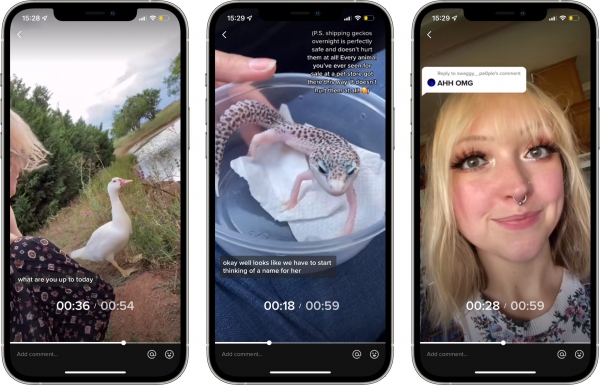
What we have seen over the past few years is the domination of short-form content, mostly in the form of videos that vary in length between 15 seconds and 10 minutes. One of the main reasons it became popular is through the widespread use of smartphones. While content used to be available only at certain times through traditional media, it can now be consumed anywhere, and at any time. As part of “snack culture”, a broad range of short, light online content is being produced to fill up spare time, from webtoons (online comics) to mobile games. Furthermore, tired of the flood of information inundating the internet, many people now favor concise content such as summary videos, as opposed to those that are longer in length. Similarly, the advertising sector is also taking full advantage of the current trend. The 2019 Video in Business Benchmark Report by Vidyard shows that 73% of advertisements in 2018 were less than two minutes long. The ease of both producing and consuming short videos creates a positive feedback loop that works contribute towards the prevalence of short videos.
A social media platform that successfully captivated Generation Z (Gen Z) through short-form videos is TikTok, the second most downloaded app in the world in 2020 and for which 51% of users are 10~29 years old, according to a report by MezzoMedia. Gen Z has grown up exposed to a digital environment from an early age and tends to prefer short-form content. According to a 2019 report by MezzoMedia, a digital marketing agency, the younger the age group, the more they preferred shorter videos. Though there were former short-form content platforms on social media such as Vine and Lasso, they depended on original users and failed to attract Gen Z users. Thanks to the success of TikTok, more short-form video platforms were launched, such as Instagram Reels, YouTube Shorts, and MX TakaTak.
Short form videos can have positive, influential roles in culture and society. A trend in TikTok is “challenges”—making videos of the challenge topic and sharing it on TikTok. Due to the COVID-19 pandemic, the Dalgona Coffee Challenge for people bored at home, and the #thankstochallenge, thanking essential health workers, became popular. Some songs became record hits by using TikTok effectively: Zico, the singer, started a dance challenge for his hit song, “Any Song”. According to a research by MRC data, 75% of TikTok users discover new artists on TikTok and 67% are more likely to seek out TikTok songs on music streaming services.
On the other hand, the shortening of people’s attention span is now becoming an issue that seems to be widely discussed. Being exposed to endless streams of short clips that vary widely in topics can easily shatter one’s attention. Short videos that, by nature, lack any profound information inevitably rely on eliciting primitive emotional reactions as a main outlet to grasp viewers’ attention. This, as a consequence, promotes sensationalism and fundamentally goes against the evolution of human cognition. Given that teenagers are the main age group that consume such content, the potential harm is detrimental. While short videos are entertaining, Professor Chan S. Suh of the Department of Sociology at Chung-Ang University solemnly warns, “we should be cautious not to get too comfortable with short form content that weakens our patience to embrace invaluable knowledge and ideas that require a longer focus.”


